Who's Afraid To Cut To Zero?
Most U.S. mold shops still leave extra stock on the cores and cavities of the molds they machine. This practice is unnecessary and wasteful, say proponents of advanced machining technology.
Share




To go from milling machine to mold press to perfect molded part with the first shot is the dream of many mold shops.
"There's no reason a mold shop can't achieve that goal," says Keith Kauzlarich, vice president of Single Source Technologies (SST) in Auburn Hills, Michigan. "The process to machine molds that need no benching or spotting exists today. Most mold shops in the United States simply haven't embraced the technology that this process requires," he says.
A high percentage of mold shops habitually leave at least 0.001 to 0.003 inch of extra material on cavities and cores. This practice ensures the shop that there is sufficient stock to allow for hand grinding, polishing and other adjustments without exceeding the dimensional tolerances on the mold. It also allows for a safety factor to compensate for the margin of error in parts of the customary moldmaking technology, such as:
- CNC programs that cannot generate tool paths that match the geometry to a tighter tolerance band than the stock allowance.
- Cutting tools that are imprecisely ground or inconsistent from tool to tool.
- Runout in toolholders.
- Spindles that vibrate excessively or run off center.
- Machine tools whose volumetric accuracy is uncertain.
These defects and imperfections are accepted as a fact of life by many shops. "They assume that machining cores and cavities 0.001 to 0.003 inch oversize will safely let them compensate for errors in the process," says Mr. Kauzlarich.
He contends that this practice is a major obstacle to the competitiveness of mold shops in this country. "Dealing with that extra stock virtually guarantees that it will take longer and cost more to build a mold than it should," he says. "The practice forces a shop to factor in handwork as a necessary step in mold making. It also makes it inevitable that a mold will need to be adjusted in the spotting press and tweaked further in the production press before good parts can be molded.
Mr. Kauzlarich sees several big problems here. 1. Because labor costs are high in the United States, minimizing labor content is imperative for U.S. mold shops to compete on a global basis with low-wage offshore mold shops. Building handwork into the process puts the U.S. shop at a disadvantage from the start. 2. Buyers are becoming less tolerant of molds and production tooling that require costly downtime for adjusting and tweaking on their shop floors. 3. The process technology for cutting molds to zero is being adopted rapidly in Japan and elsewhere. If U. S. shops don't change, they will surely be left further behind.
According to Mr. Kauzlarich, mold shops should routinely machine one side of the mold to zero, leaving no extra stock, and the other side to -0.0008 inch (0.0008 inch less than the nominal dimensions). The negative stock condition, usually on the core side, has important benefits. This is a radical recommendation in the eyes of many shops and they are instinctively resistant. The process, however, is sound, Mr. Kauzlarich insists.
To successfully cut molds to zero on one side and –0.0008 inch on the other, Mr. Kauzlarich outlines the process requirements:
- A three- to five-axis milling machine with exceptionally high volumetric accuracy.
- A high-rpm spindle with high stiffness and very low vibration (in the range of 3 microns peak to peak or better). The spindle should have good cooling characteristics to minimize thermal growth. Top spindle speed must reach 20,000 to 30,000 rpm. Having adequate torque at low speeds enables the spindle to perform roughing and finishing in one setup, a major plus.
- A rigid toolholding system (HSK interface with shrink-fit clamping) for extremely low runout.
- A CAM programming system capable of generating tool paths to micron resolution to match a machine tool positioning feedback system based on a million pulses per revolution.
Mr. Kauzlarich admits that the typical mold shop will not find the transition to this technology an easy or instant affair. However, the challenges are not insurmountable for the motivated shop, nor is the investment out of reach for many shops. "When they see the cost and time savings it provides, the ROI is not hard to grasp," Mr. Kauzlarich claims. "The real issue is mustering the courage it takes to start the journey and having the confidence in the capability of a new process."
A New Vision
SST was founded in 1995 by Mr. Kauzlarich and his partner, Tony Pekalski. Both had been in sales for Makino, a manufacturer of high-precision milling machines and EDM equipment. In the early 1990s, the two men recognized that moldmaking processes had to change drastically in order to remain competitive. Because these changes involved machine tools, CNC programming, cutting tools and other resources all working together, the two partners formed Single Source Technologies as an independent provider of mold machining solutions serving the metro Detroit, Michigan/Windsor, Canada region. SST could put together a complete moldmaking process tailored to the needs and resources of shops at different levels of technical capability. In addition to Makino machine tools, SST took on other lines of machine tools, plus cutting tools and related products and software.
In 2001, SST and Makino began to share resources and technology when the machine tool builder's die/mold group relocated from Cincinnati to Auburn Hills, a northern suburb of Detroit. SST, however, continues to offer machine tools from Hermle, Topper, Johnford, SNK, Toshiba and other mold machining suppliers. SST remains focused on a systems approach to upgrading a mold machining process. A cornerstone of this process is the ability to machine to zero/negative stock conditions.
Because promoting a process is a central part of SST's mission, the company devotes much of its energy to education and technology transfer. The goal is to show mold shops how it's done. Because many shops are skeptical or leery of machining to zero/negative stock, SST acts as an R&D facility for its prospective customers. SST often arranges to produce a shop's mold using SST's own equipment at its tech center. "We charge them for the work at a normal shop rate, but because our process typically reduces machining time by 50 to 90 percent of the customer's time, we deliver an outstanding value," says Mr. Pekalski. "But that's not the point. The demonstration of the technology is the real goal. We convince the shop that the concept is sound and that the technology is reliable."
Mr. Kauzlarich adds, "We're not in the business to build mold and dies for our customers. Most of our customers do not have funds for R&D in their business plans. This is where SST can step in, do the R&D and prove out a process on real parts, not on test pieces."
Shops that have worked with SST to implement this zero/negative stock approach prove that it can be done and that it works. Their experience shows that this approach neutralizes the wage differential that is often the deciding factor in which shop wins the job. "There's no reason why a mold shop in the United States can't play and win in the moldmaking business. The game has changed, but making the changes needed to be a winner are right in front of us."
No Weak Links
One of SST's customers is Eclipse Mold, a builder of small to medium size molds in Clinton Township, Michigan. This shop, which runs production molding and builds mold tooling, has been producing molds with zero stock since 2001. According to Mr. Kauzlarich, the shop understands the importance of machine tools with high volumetric accuracy and embraces the concept of producing molds with no excess stock.
The company is reaping the rewards, says Steve Craprotta, Eclipse Mold's vice president. After implementing the process, the company immediately saw a 75 percent reduction in spotting time and, in some cases, the elimination of all handwork.
"This technology enables us to address the demands for lower and lower tool costs and to compete globally because of reduced labor content," says Mr. Craprotta. "We have been able to shorten our leadtimes, improve our part quality and increase our throughput." He says that Eclipse has been able to steadily increase sales without adding labor. In 2004, sales increased 24 percent.
Clarence Meltzer, president of Cammand Machining, is another customer who has benefited from implementing the zero/negative stock approach. Located in Chesterfield, Michigan, Cammand is a high-precision 3D machining house for small, medium and large mold and dies."We cut a lot closer than what other machine shops think they can or should cut. Many of them leave extra stock," says Mr. Meltzer.
He attributes much of his shop's success to the precision cutting tools and machines, but cautions, "you can't break any piece of the chain. In order to achieve zero spotting time, everything—software, tooling, machine, accuracy—has to be dialed in." Violate any of these elements, and the benefits will not be realized, he says.
This is not to say that the process is unreasonably demanding or fragile, notes Mr. Kauzlarich. It simply means that all of the necessary capabilities must be in place and procedures must be followed consistently.
Hard Milling Solutions, in Shelby Township, Michigan, has also been realizing the benefits of zero/negative stock machining. According to the company's Vice President, Corey Greenwald, by cutting to negative stock, the shop is practically eliminating the need for benching.
"The results are incredible," says Mr. Greenwald, but he warns against making the mistake of trying to save money by purchasing less expensive cutters. "When you spend the money on the right tooling, you triple the life of the cutter, plus you know that the radius is true," he says. The radius of the cutting tool is critical. It has to be within ±0.005 mm. Otherwise, Mr. Greenwald says, the cutter cannot maintain a constant chip load or produce a good surface finish. Runout should be less than 0.0003 inch, and tool geometry should be accurate to less than 0.0002 inch, he says.
To be sure ballnose end mills meet these specs, Hard Milling Solutions and other shops cutting to zero use laser measurement and tool monitoring systems. See the box above (Small Tools and How to Monitor Them).
A Better Mold
The advantages of molds following this approach also extend to the mold buyer. The primary benefit is a longer lasting, more efficient tool. By machining the cavity to zero and the core to –0.0008 inch (or both halves to –0.0004 inch), the mold halves never touch along the parting lines. "Only the locks make contact when the mold closes," says Mr. Kauzlarich. As a result, the sharp edges on the cavity side are not subjected to friction or impact. Thus, these sharp edges are far less likely to chip or round off, especially in long-running applications. This means the molder experiences lower maintenance costs and prolonged mold life.
Another benefit is improved cycle time. The slight gap (between 0.0002 and 0.0004 inch) between core and cavity allows the mold to vent more readily and evenly. Molding pressure can be reduced to get a good shot without flashing. Running the mold at a lower temperature may also be possible in some cases, reducing cooling time in the cycle.
Securing The Future
Mr. Kauzlarich and Mr. Pekalski agree that the number of mold shops in their region that are taking a serious interest in zero is steadily growing. The success of shops that have mastered the process is giving it credibility, and that encourages other shops to follow suit.
"No one should write off the moldmaking industry in this country," says Mr. Kauzlarich. "On both cost and time, we can beat the import tooling. The technology is out there. Old habits and old thinking stand in the way."
Related Content
How to Accelerate Robotic Deburring & Automated Material Removal
Pairing automation with air-driven motors that push cutting tool speeds up to 65,000 RPM with no duty cycle can dramatically improve throughput and improve finishing.
Read MoreRead Next
5 Rules of Thumb for Buying CNC Machine Tools
Use these tips to carefully plan your machine tool purchases and to avoid regretting your decision later.
Read MoreBuilding Out a Foundation for Student Machinists
Autodesk and Haas have teamed up to produce an introductory course for students that covers the basics of CAD, CAM and CNC while providing them with a portfolio part.
Read MoreRegistration Now Open for the Precision Machining Technology Show (PMTS) 2025
The precision machining industry’s premier event returns to Cleveland, OH, April 1-3.
Read More













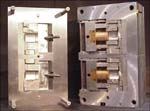
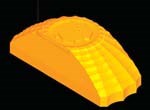
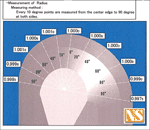

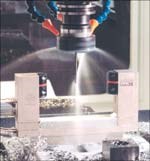
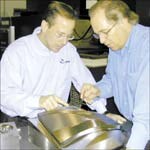










.jpg;maxWidth=300;quality=90)




